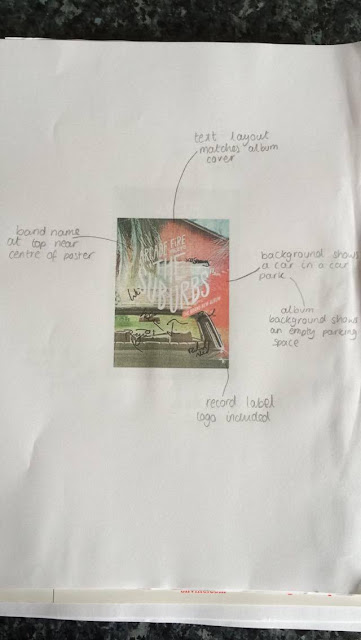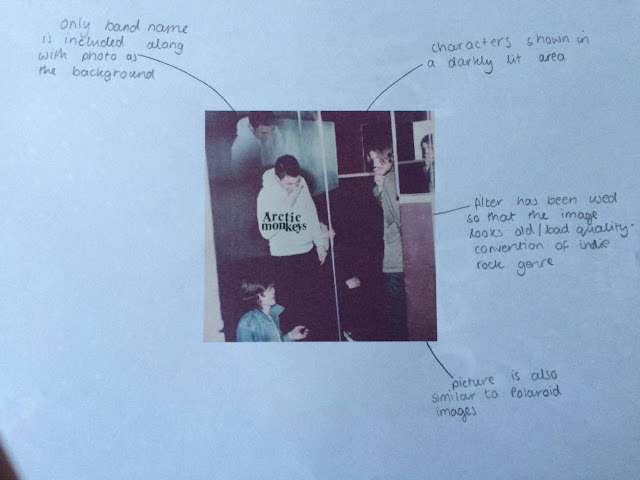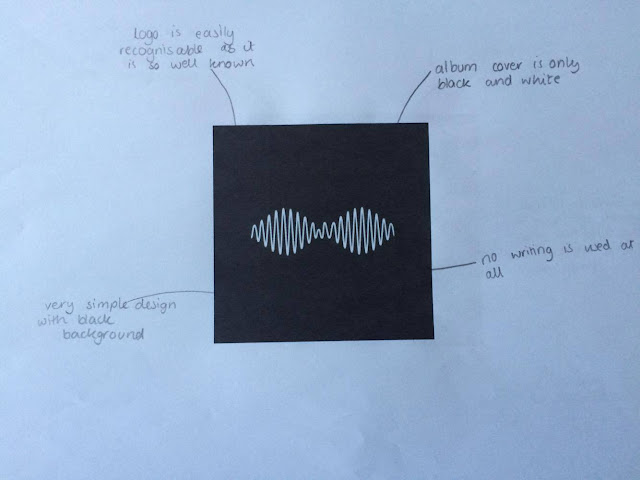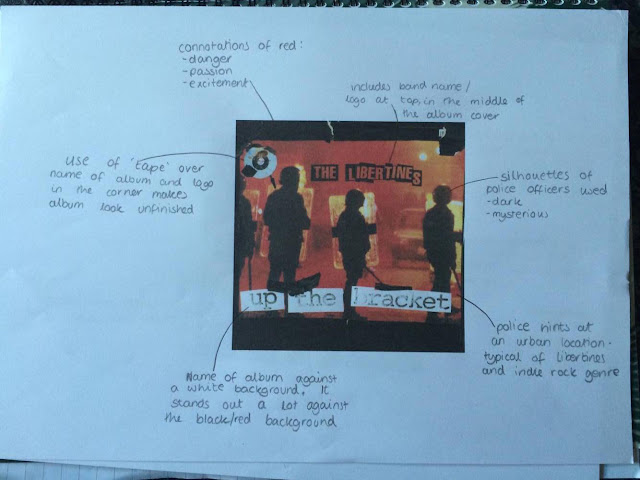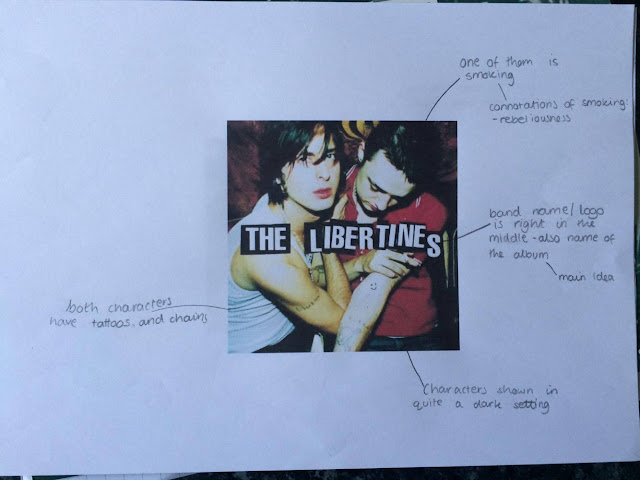Sunday 29 November 2015
Analysing Magazine Adverts: Conclusion
What we found out
After looking at three magazine adverts from three different indie rock bands, we were able to determine a rough 'template' of what we thought we need to put on our advert for The Jacques.
The most common similarity which we found between the adverts was that they all included the bands' names at the top of the poster in the middle in a different font to that which was used on the rest of the poster. All three magazine adverts also included a small logo of the bands' record label at the bottom of the page. The backgrounds used were either identical or quite similar to the album which the advert was advertising, meaning there would be no confusion with what the poster was advertising. This meant that the band was often not shown on the tour poster. One of the posters gave a name of one of the tracks on the album (presumably one of their more well known tracks) as well as the band's website and the website of their record label. This could be because the band is less well known and they want to promote themselves more. We also noted that all of the magazine ads which we looked at were portrait as they would have been shown in a magazine.
From this we decided that it would therefore be essential to include The Jacques name at the top in the centre of our poster as well as including relevant information about the band such as their website and their social media pages, as our band is not so well known. This would help the band to promote themselves on as many different platforms as possible. We also plan to include the logo of The Jacques' record label, Rough Trade Records. We decided that it would also be essential for our advert to be portrait so that it would fit with other ads which you would expect to find in a magazine and we also thought it would be good if we could use a similar or identical image for our background of the advert as we did for the front of our album, so that our audience could easily link the two together.
Saturday 28 November 2015
Thursday 26 November 2015
Saturday 21 November 2015
Analysing Album Covers: Conclusion
What we found out
After analysing album covers from several indie rock bands we saw that the album covers always included some sort of known logo of the band (this included specific fonts which the band always use for their band name. The fonts used varied too much to comment on, however this is because the font depended mostly on the bands personal style and fonts which they had used in their logos. If font was used, it was always clear and easy to read.
Colour effects were sometimes added to the background. This included black and white (which is also used in many indie rock music videos) and filters which gave the album a more vintage look. The backgrounds themselves always conformed to the indie rock genre with their rough and reckless appearances, hinting to low budget, urban locations. The background also had very simple designs so as not to distract from the text or to look too complicated. In all the examples we looked at the band were not shown on the album covers.
When making our album covers, we plan to include the name of the band on the front in their chosen font. We are also planning to take stills from our footage to use for our covers, as this saves us having to reshoot to get stills. As we are not using the band themselves, we thought that it would be suitable to show some of the kids on the album cover, as the bands which we looked at did not use stills of themselves on their album covers.
Friday 20 November 2015
Thursday 19 November 2015
Wednesday 18 November 2015
Post-Production: Logo
Adding in a logo
After finishing our music video we just needed to add one more thing to make our video look as though it would be shown on TV- a logo. We needed to add in an MTV Rocks logo to the top corner of our video, as all music videos shown on TV include a logo of some sort. We decided on MTV Rocks for our music video, as it is the channel where our music video is most likely to be found. To do this we simply had to save a copy of the logo, remove its background and place the logo over the top of our music video.
 |
| The logo which we added to our music video |
Saturday 7 November 2015
Post-Production: Colour Grading
Colour grading our film opening
After we had letterboxed our sequence, we needed to colour grade it. When doing this our aim was to make sure that all of the shots had a similar level of colour/light. A lot of our shots were over exposed, so we had to reduce the brightness of the shot. As well as this we had to adjust the colour levels in some shots, reducing or increasing the warmth when shots looked to warm (red) or cold (blue).
Our performance shots were particularly hard to colour grade as we used coloured lighting when filming, so it was hard to tell when a shot had too much red/blue etc. as the colours were constantly changing. To combat this, we tried to ignore the colours more (unless the shot was obviously very strongly one colour) and just increase and decrease the brightness as necessary. The narrative shot were slightly easier to colour grade; all we had to do was to make sure that we made the same/similar adjustment to each shot so they fit together nicely.
Wednesday 4 November 2015
Post-Production: Letterboxing
Letterboxing our music video
After we had played down our shots and we were happy with the order/cuts which we had chosen we needed to letterbox our piece. This is a technique used by most professional music videos to frame the shot better and make sure that it is positioned correctly on the screen so that the video can look as best as it can. In order to do this we simply had to make sure that each frame was set to the same size: 2:35:1 and then reposition each shot slightly by dragging the shot up or down depending on what looked best.
 |
| After letterboxing on of our shots |
Subscribe to:
Posts (Atom)
